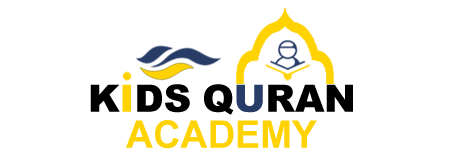At Kids Quran Academy our aim is to help every child to be able to read the holy Quran with Tajweed in any time anywhere helping them to build their confidence and keeping them engaged. We have created a Noorani Qaida course for kids, and in this course, your kids will learn the Arabic alphabets, pronunciations, and rules for the alphabets of the Quran. We focus mostly on learning how to read and understand the Quran.
At Kids Quran Academy, we primarily base our teaching right from the start to students from the noorani qaida. Noorani Qaida is a vital starting point guide that helps children to learn Arabic Alphabets, Arabic pronunciation of the letter and vowels (Fatha, Kasra, Damma) and prolongations (Madd). The course is a pivotal foundation as it prepares children to read Arabic correspondences fluently.
The pronunciation of the letters, and the tajweed rules which will help them to read. This will enable your child to seamlessly start reading any other Quran given the confidence and accuracy developed from this course.
We deem Noorani Qaida to be the best possible way to initiate those young minds into the incredible realm of Arabic language and Quran. Register for our course at Kids Quran Academy and let your child start on a beautiful Quran learning path.
Noorani Qaida Course For Kids Structure
Our Noorani Qaida Course for Kids is conducted by one-on-one live lessons via Skype or Zoom that means each child takes individual lessons with personalized instructions. Every class is of 30 minutes or above (you can extend as per your pace on an optional basis) An open course, designed for kids 3 years old and up with no pre-requirements-all children welcome to play. This is an entry-level course for children to acquaint them with the basic rules of Arabic reading. Additionally, the course takes as long as a student needs to complete, with tutors going at a pace that is comfortable for each individual child.
Each student will have a dedicated online private tutor guiding them through the learning process. The course is open to both male and female students, and instruction is available in multiple languages, including Urdu, English, Hindi, and Pashto, to cater to diverse linguistic backgrounds.
Noorani Qaida Course For Kids Outline
Our Noorani Qaida Course for Kids teaches the right way to pronounce Arabic alphabets (Makhraj), ensuring that they comprehend the correct points of articulation for each letter. First, they will practice recognizing the shape of Arabic letters when they appear in beginning, middle and end positions of a word. The course also incorporates the combination of letters to make simple syllables and words (Huroof e Murakkabat) to create better reading fluency. Kids will learn the Fatha, Kasra, and Damma marks (short vowels-or Harakaat) and how they are added to help with letter sounds. They will also learn the horizontal vowels (Movement of Rest) and vertical vowels (Standing Movements) to be able to read words correctly.
The elongation of speech using Madd letters (Alif, Waw, ya) and the soft vowels (Len Letters) to correct its tripartite counter. Student will be able to recognise and write Sukoon (Jazm) to make consonants sounds without vowels and read emphasised doubled consonants (Tashdeed). To learn the rules and pronunciation of Tanween (double vowels) and understand how to correctly pronounce Noon Sakin and Meem Sakin wherever they appear. Moreover they will be able to know the correct places of stopping points (Waqf) during the recitation of Quran.
Practical exercises incorporating all these rules will reinforce correct pronunciation and fluency with Tajweed. This structured approach ensures that students build a solid foundation in Arabic reading, preparing them for further Quranic studies.
Objectives
If you choose our Noorani Qaida Course for Kids then we will teach Arabic letters to kids in shapes and sounds to develop the ability to recognize and pronounce each letter correctly. They will begin with mastering the Makharij of the Arabic alphabets – articulating each letter at its unique limit.
Additionally, students will learn Quran recitation properly and fluently with a basic rule of tajweed imeInterval: You should have handout with rules of tajweed. In addition, students will have a basic understanding of Islamic concepts which they will build upon in their higher level religious education.
